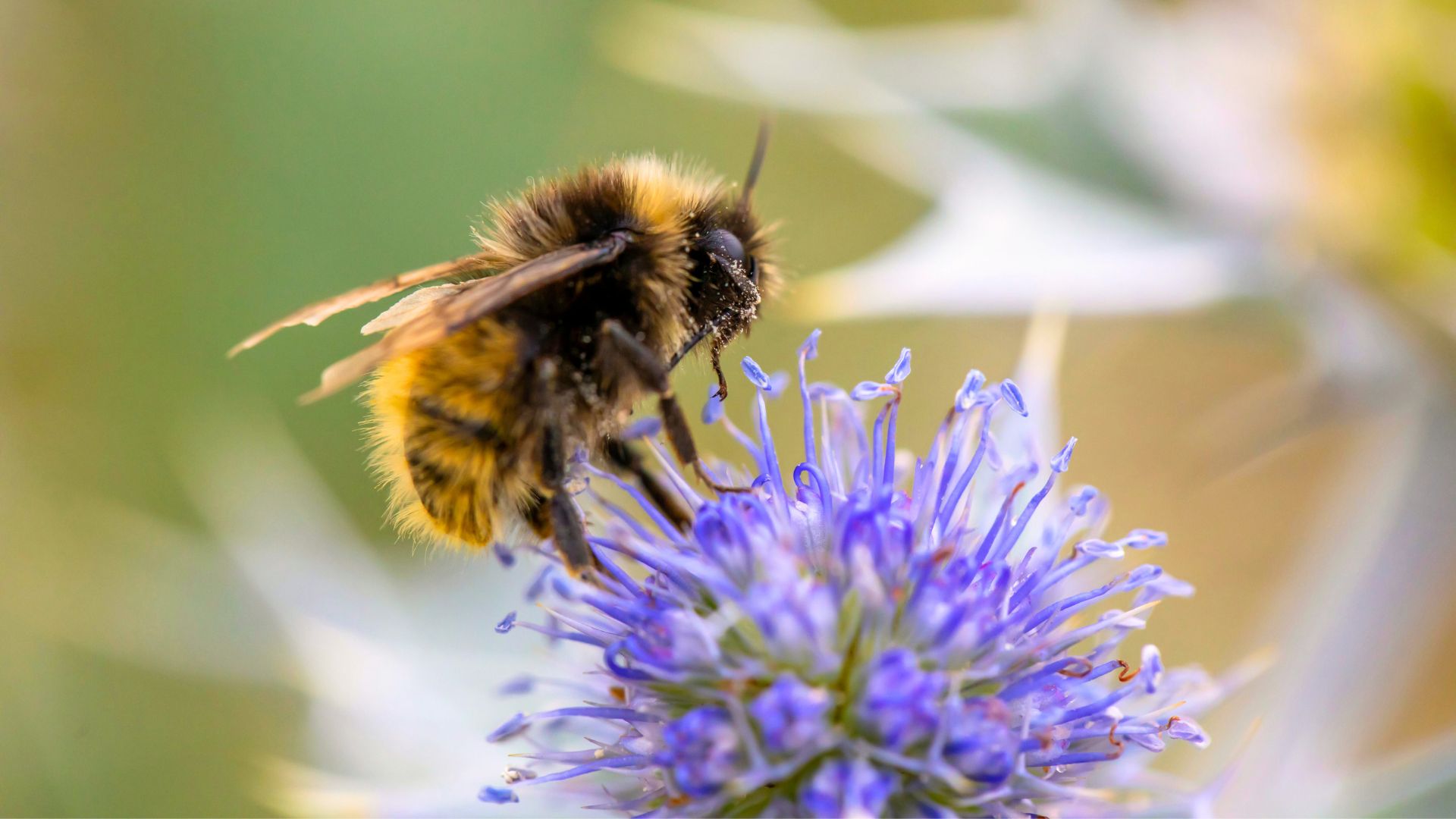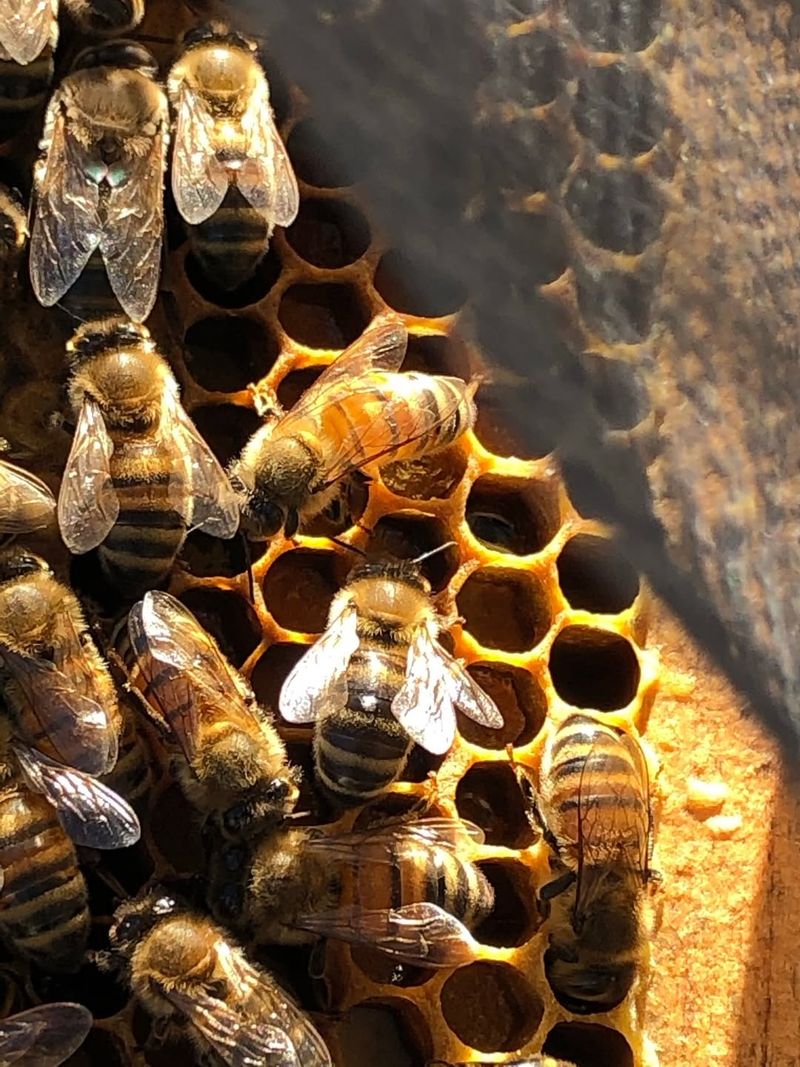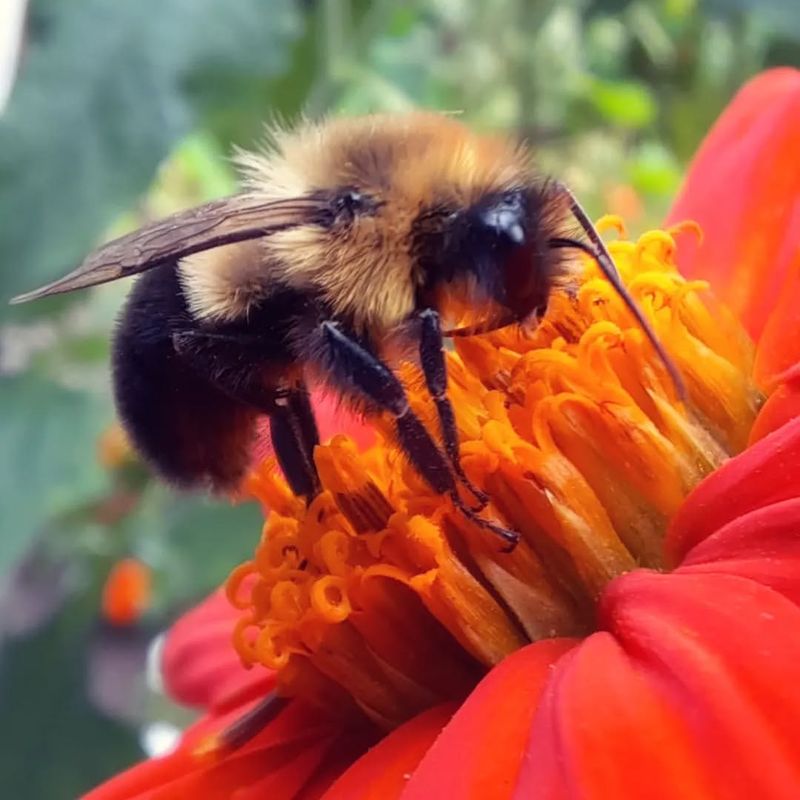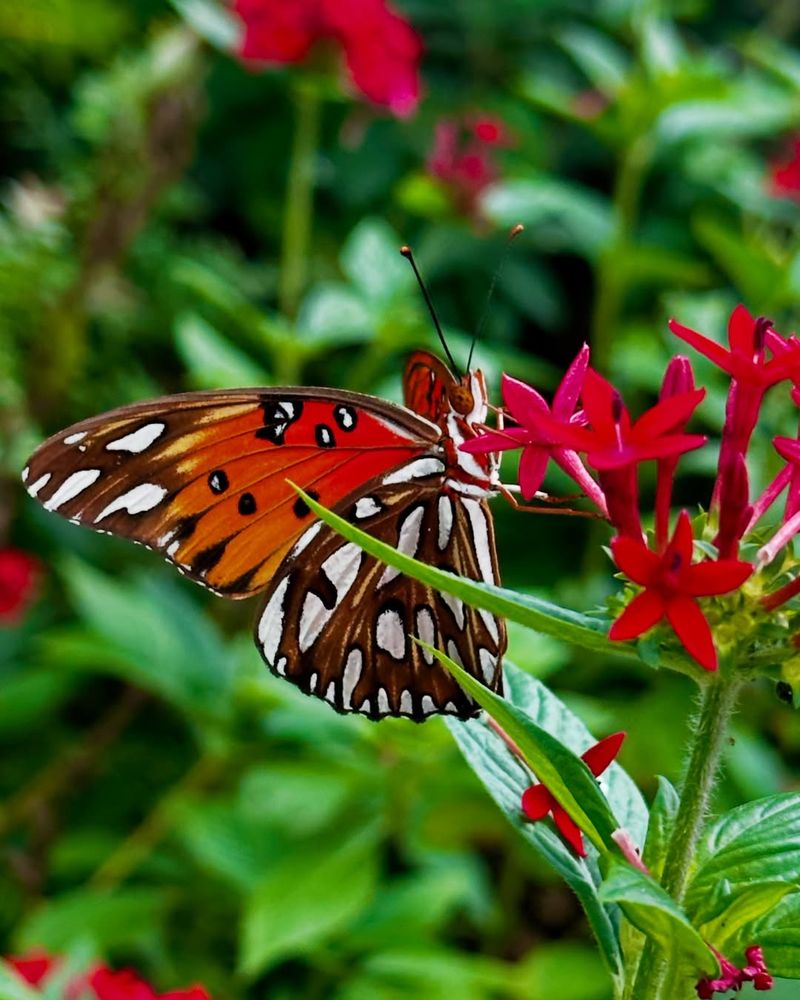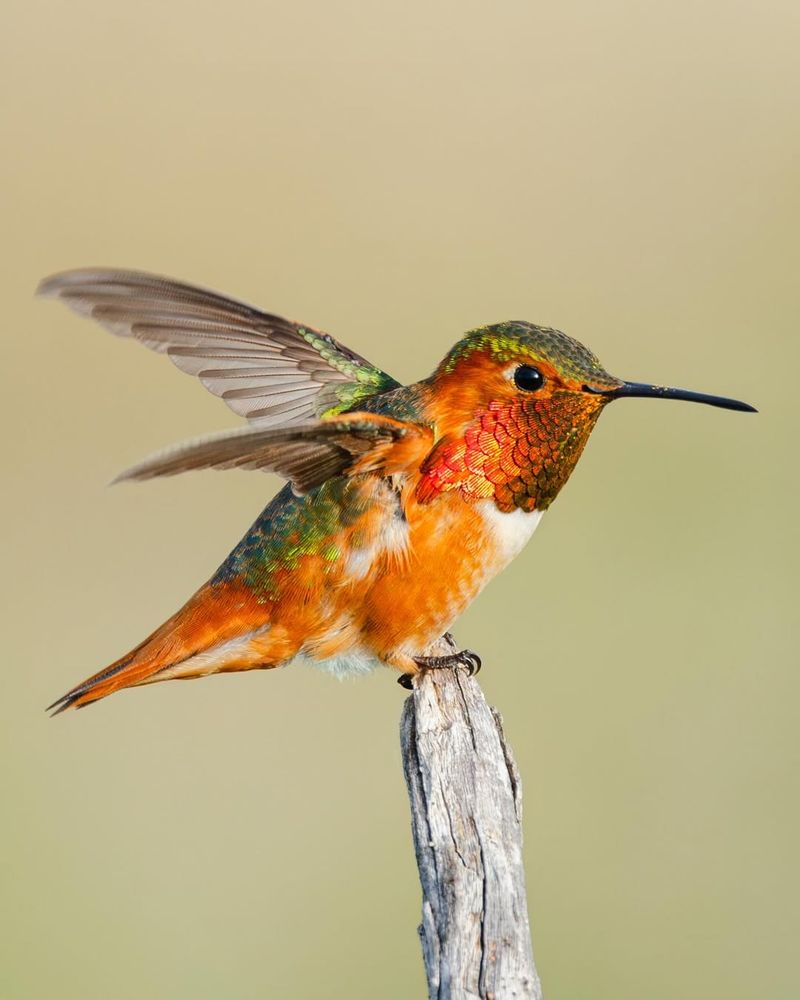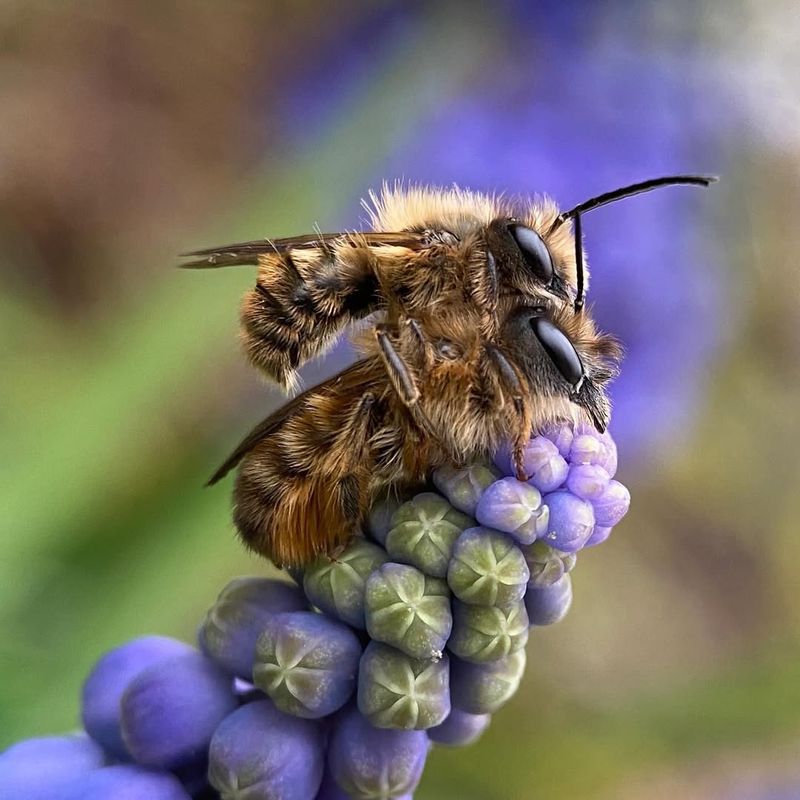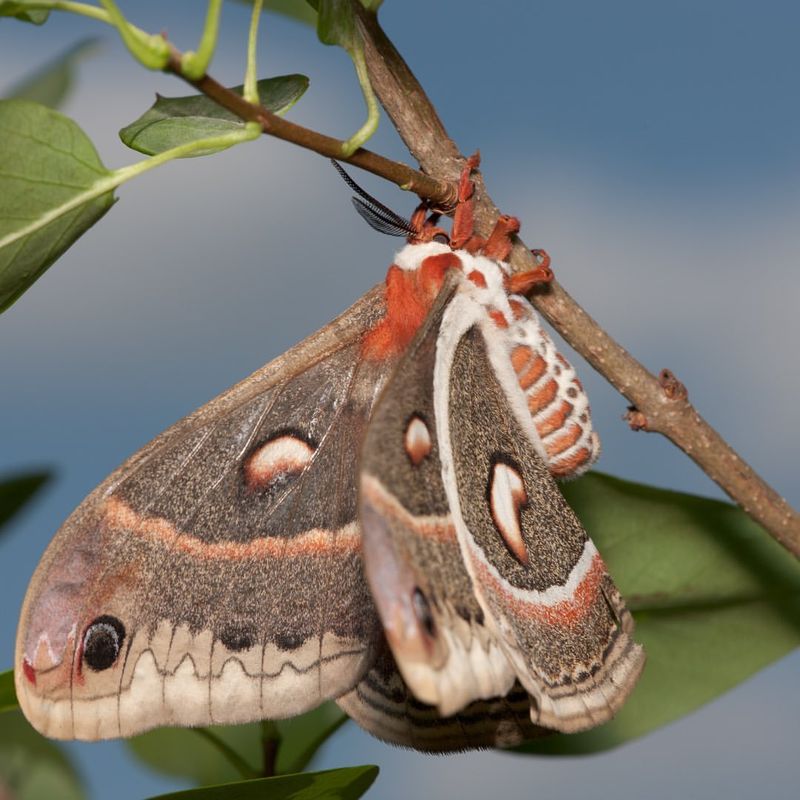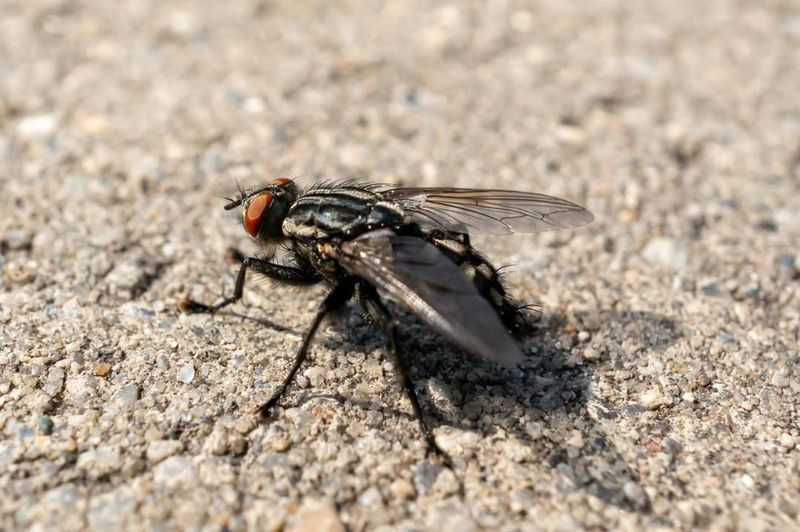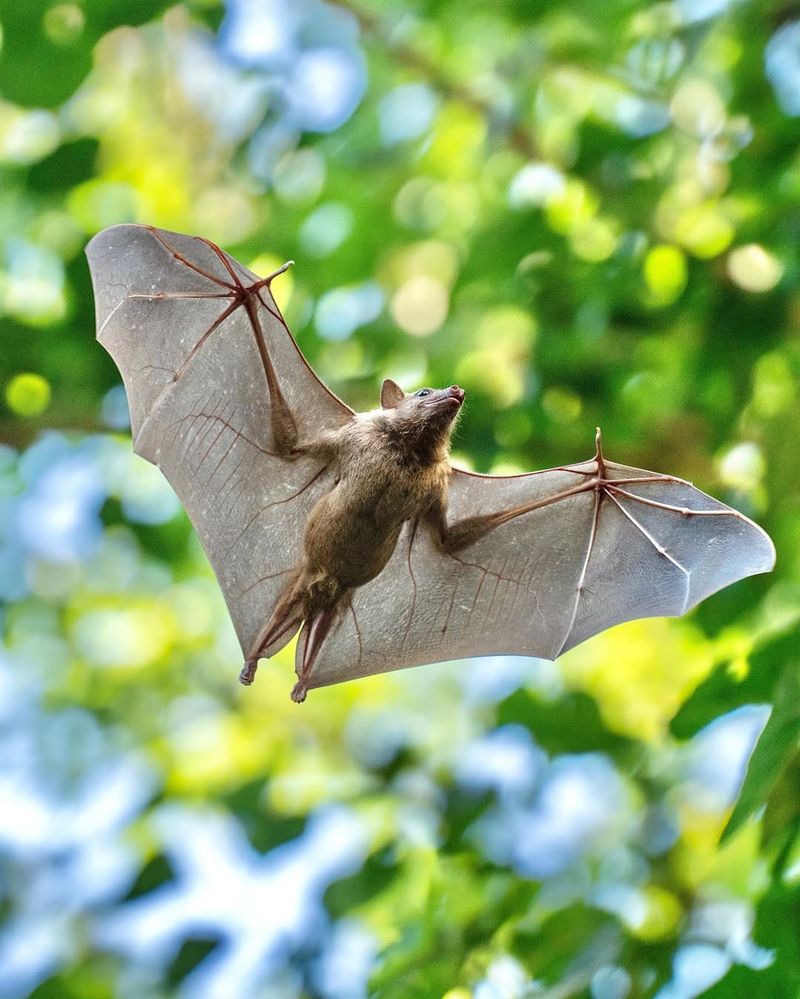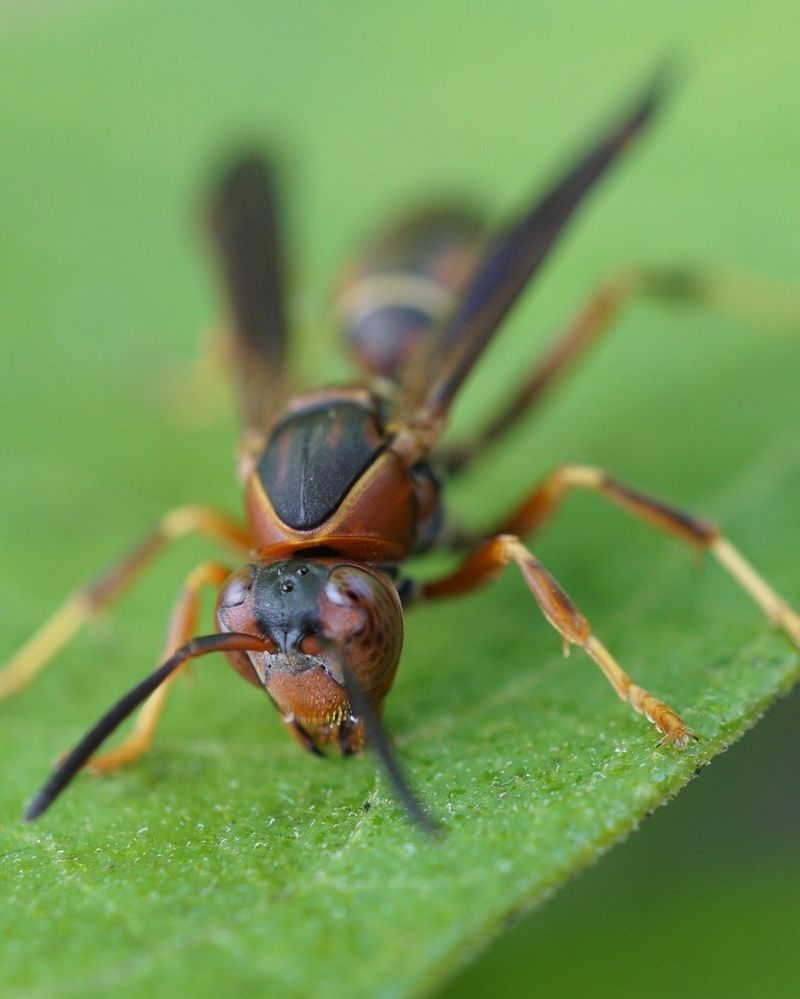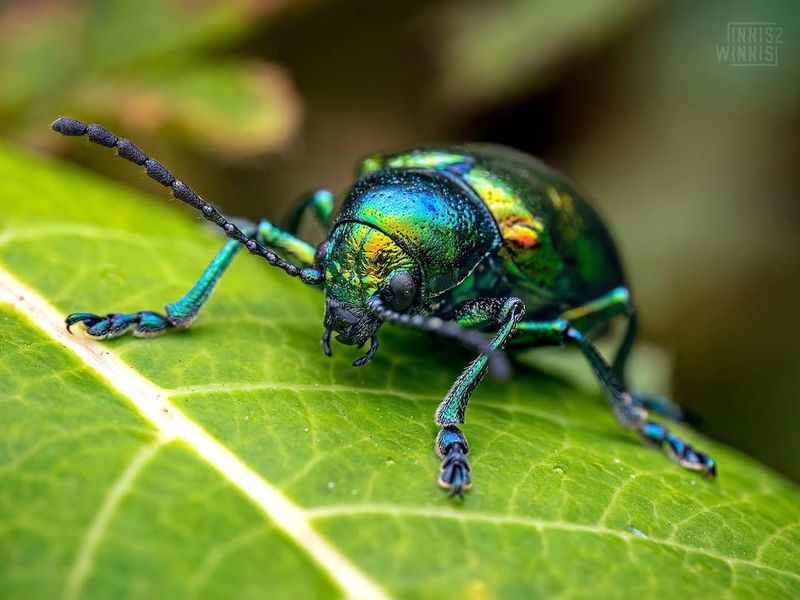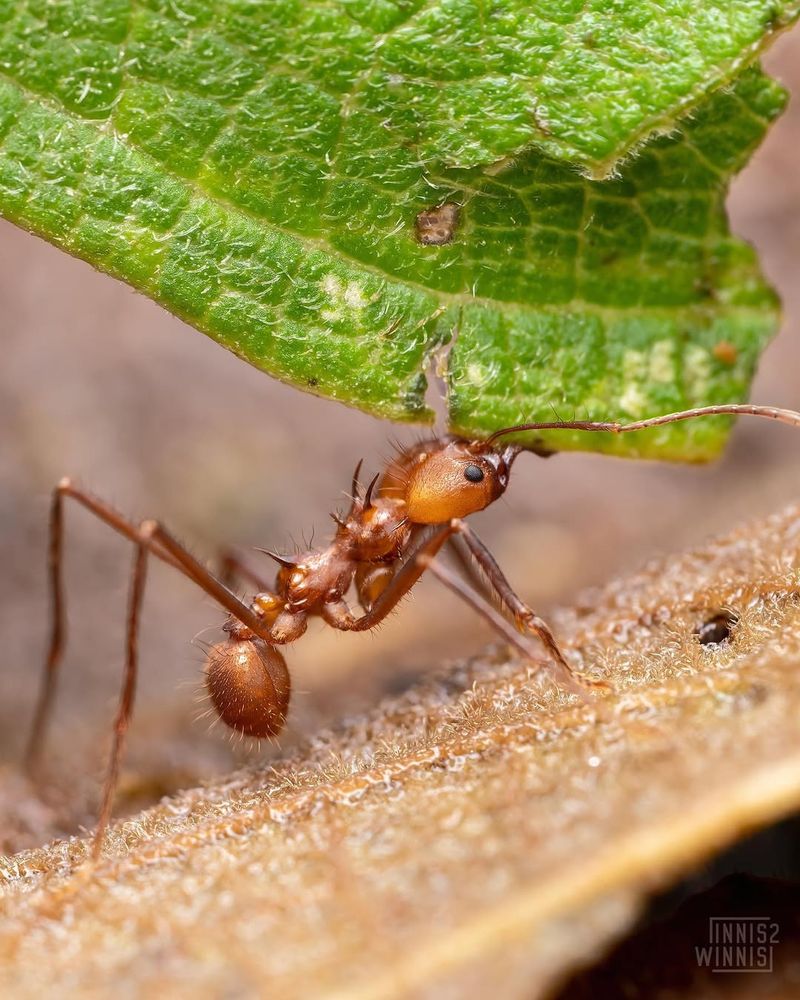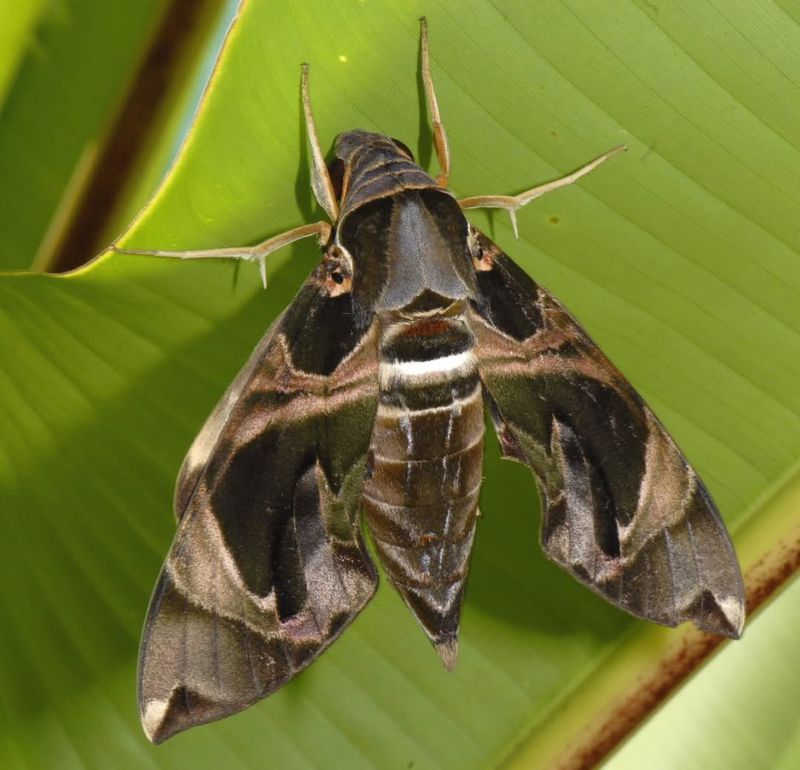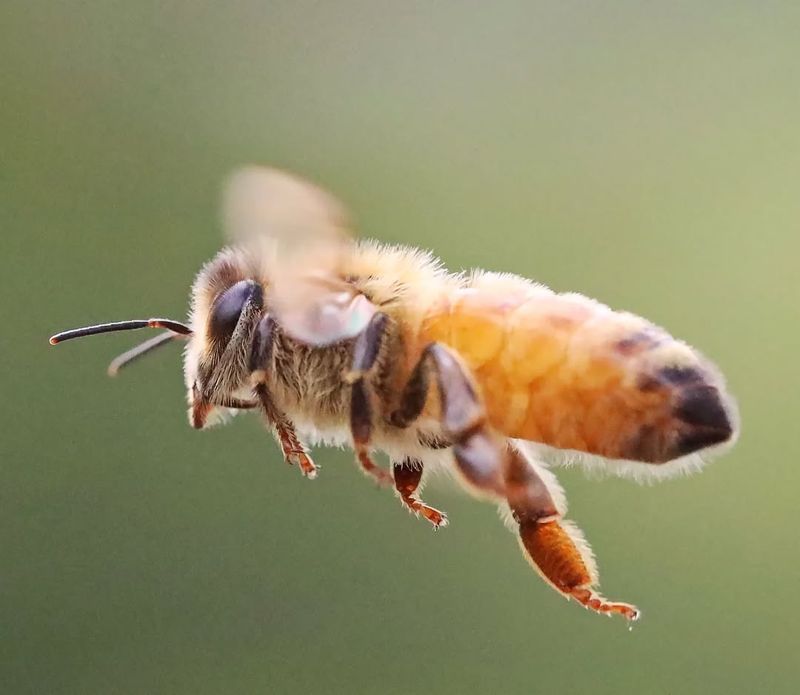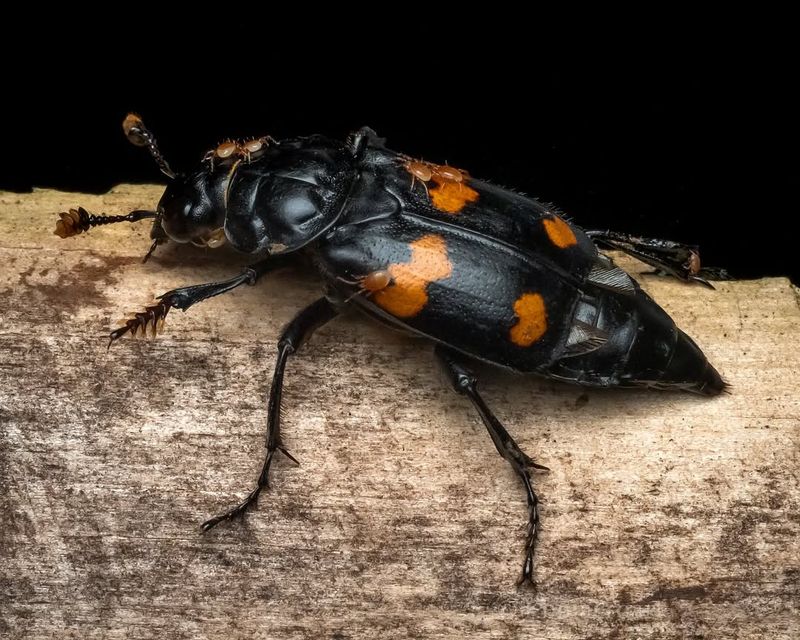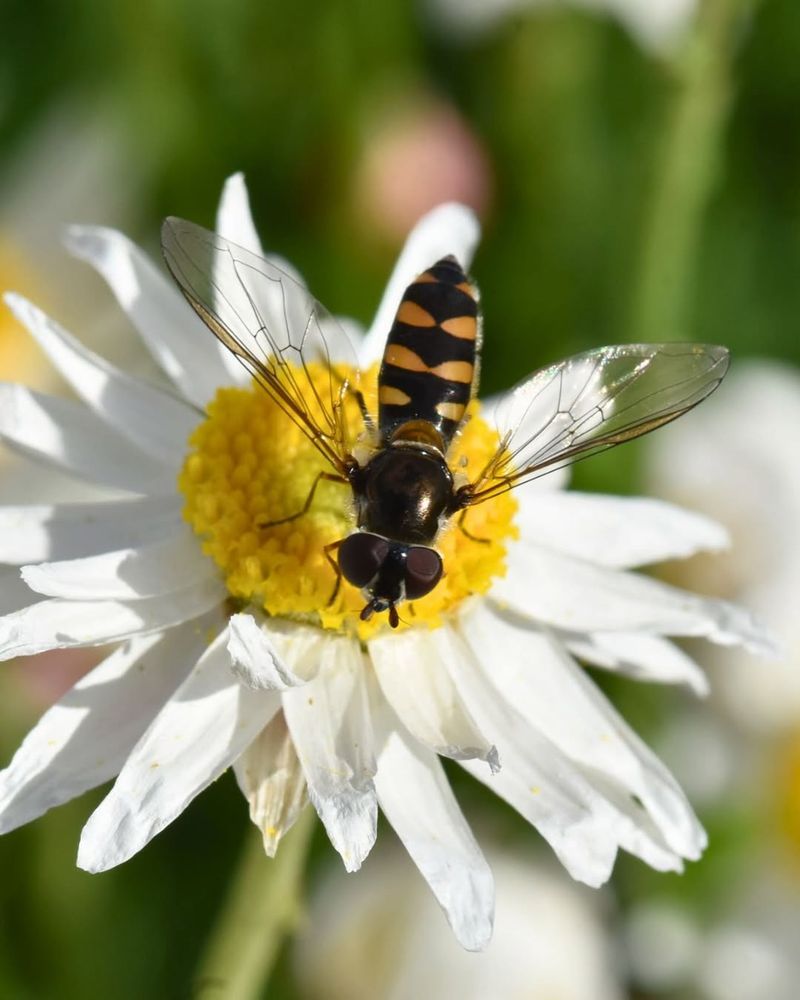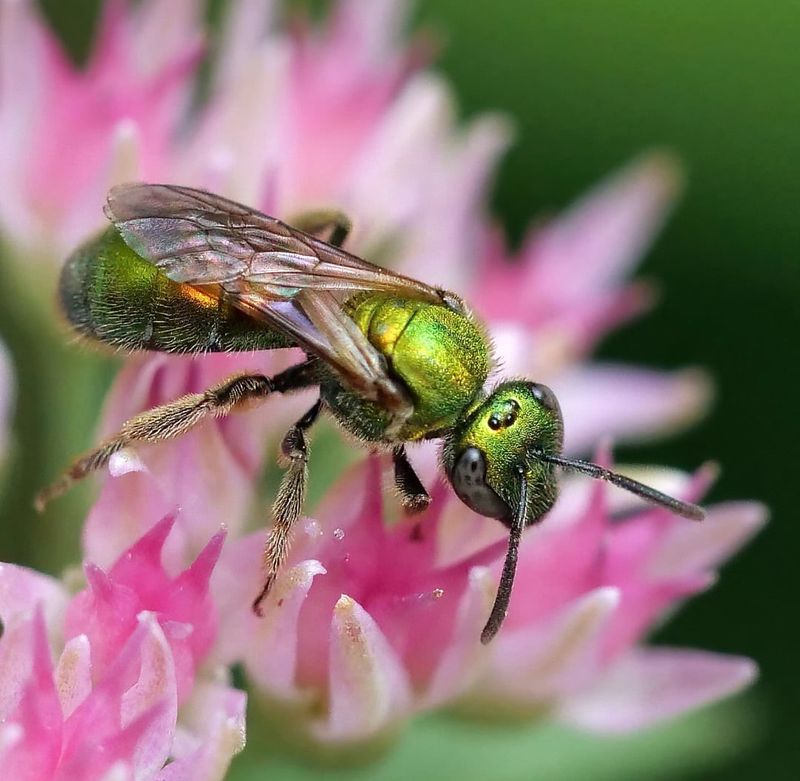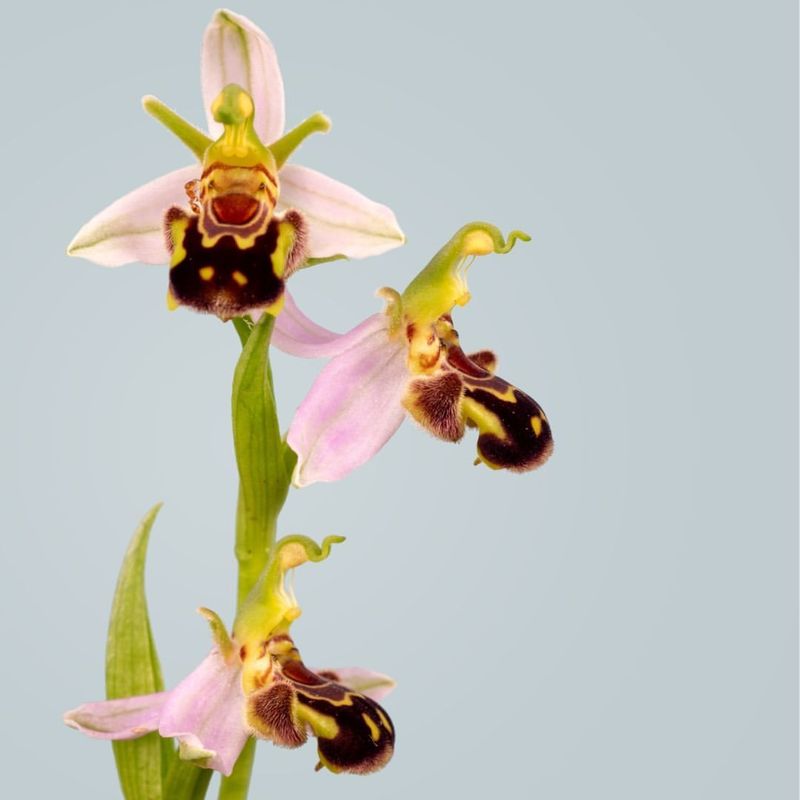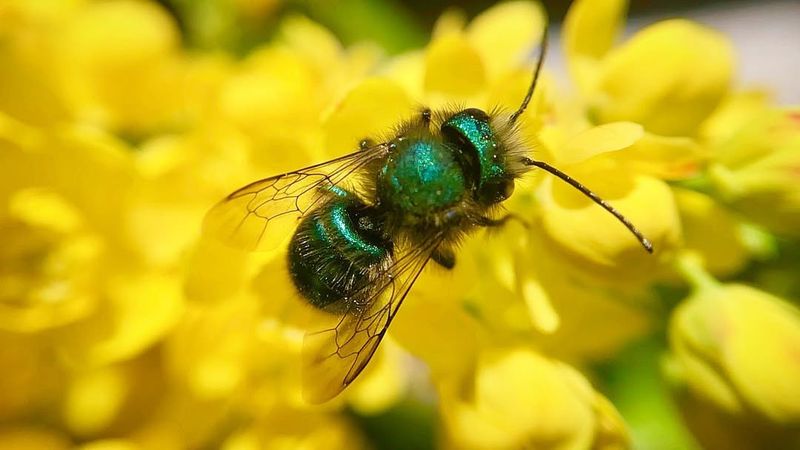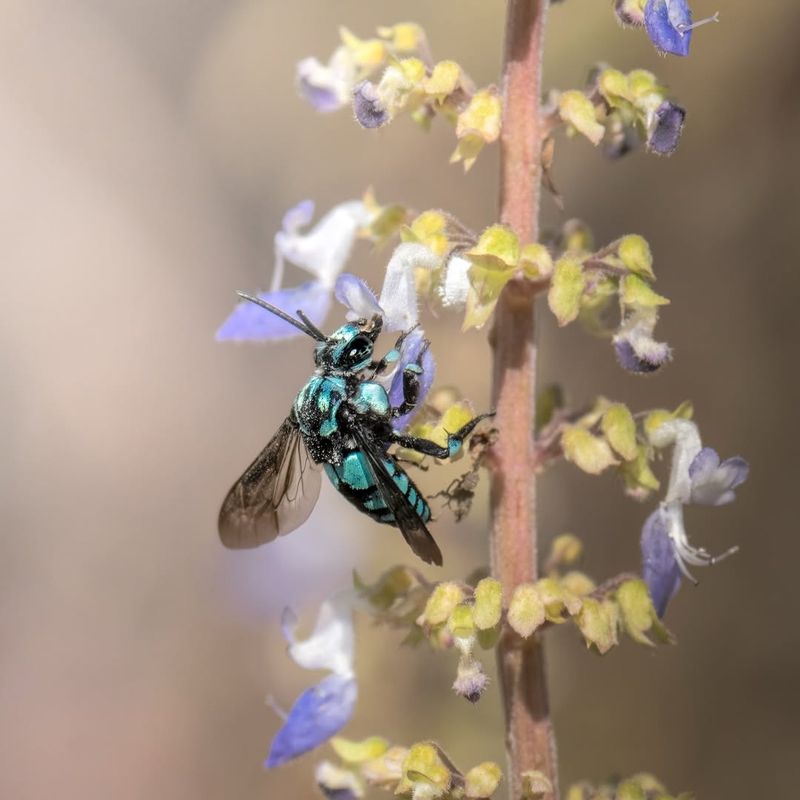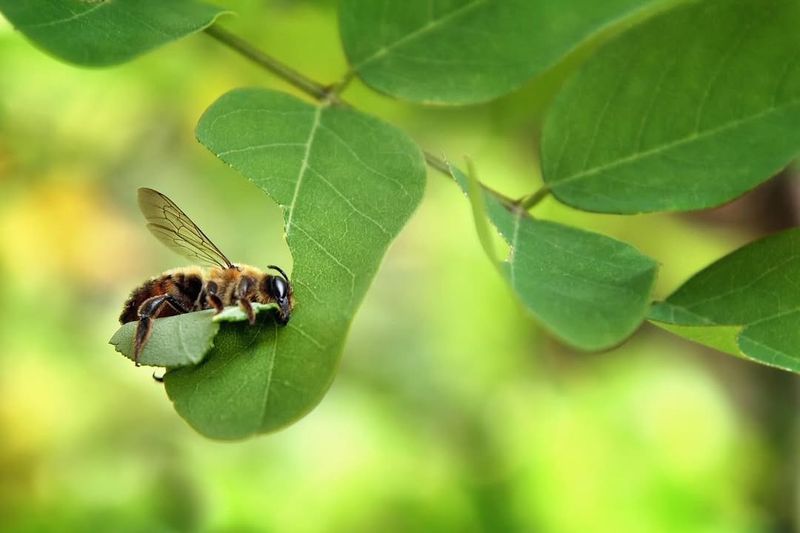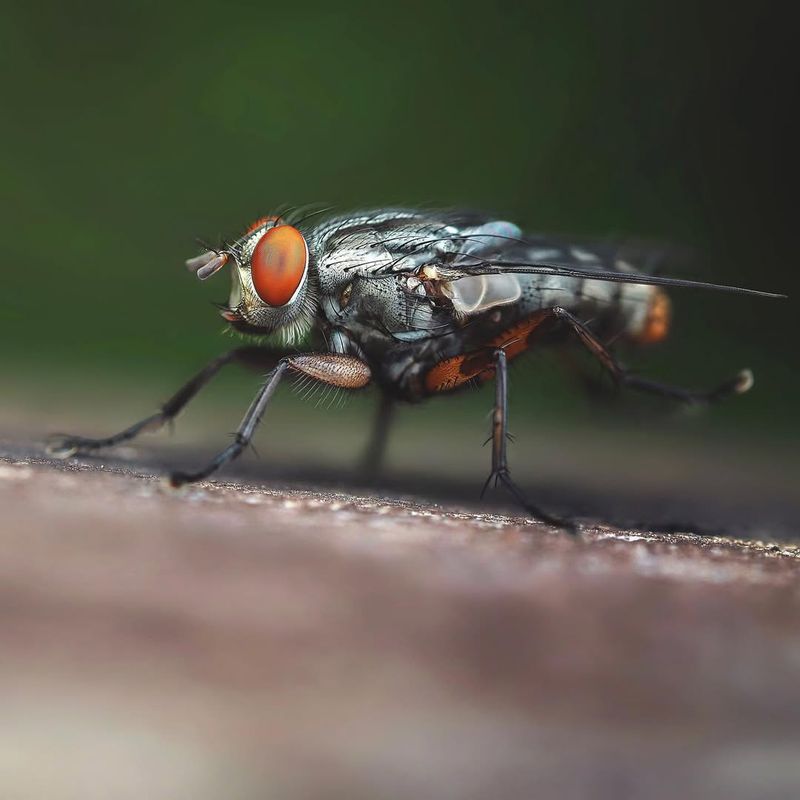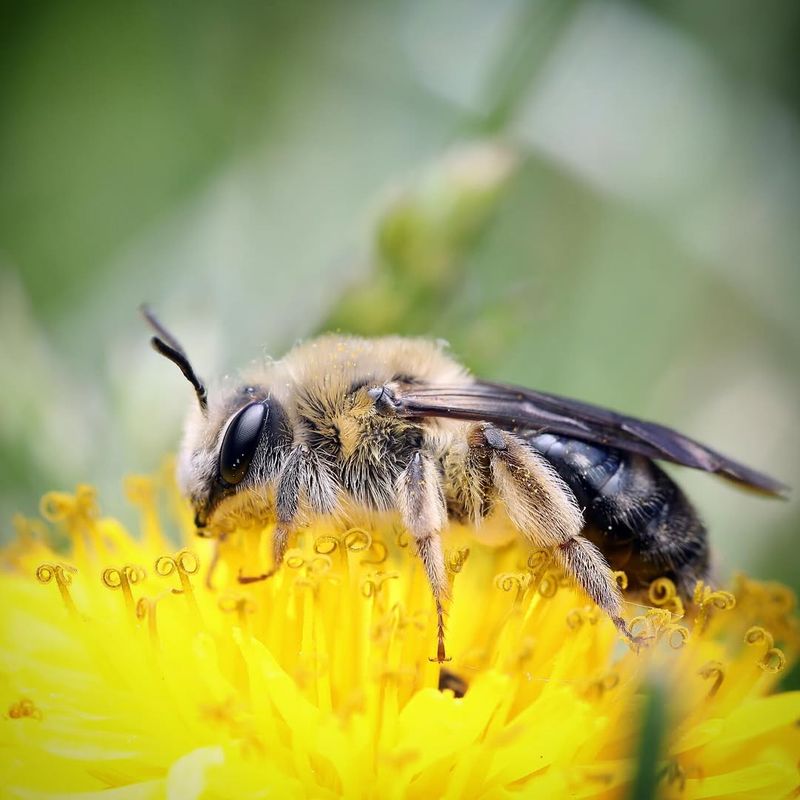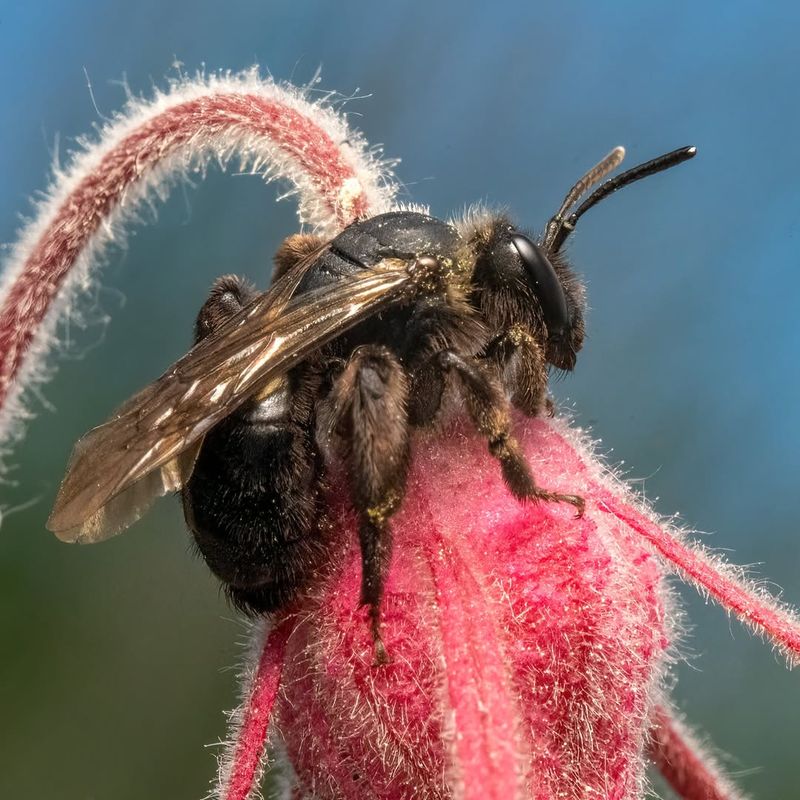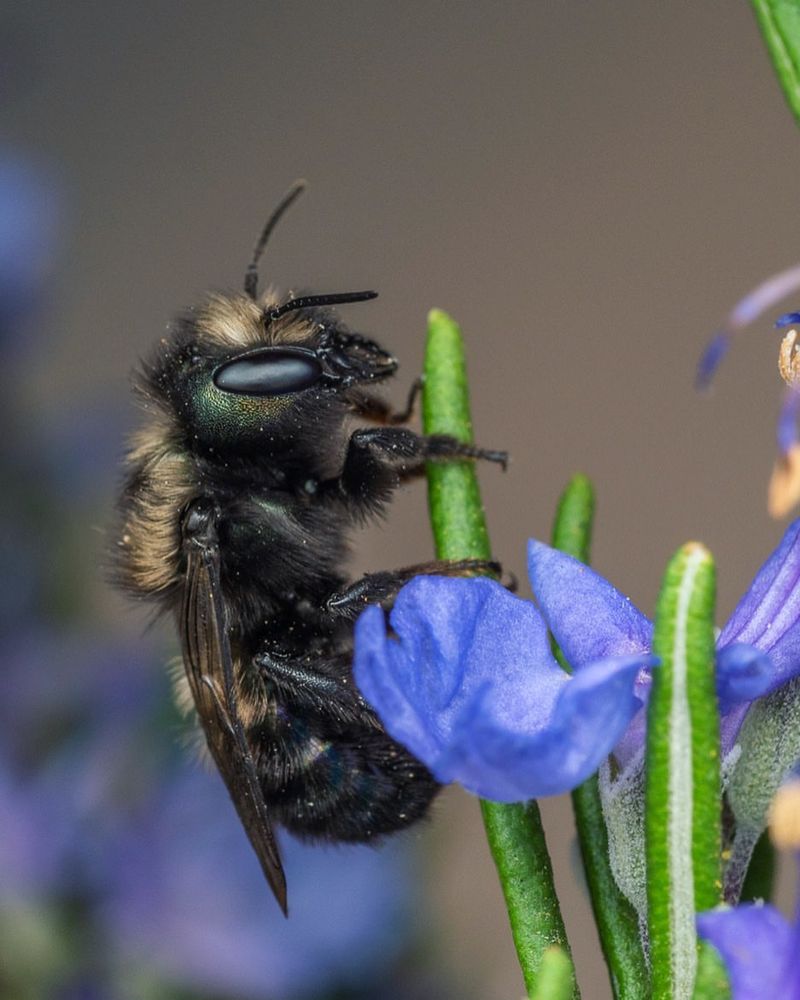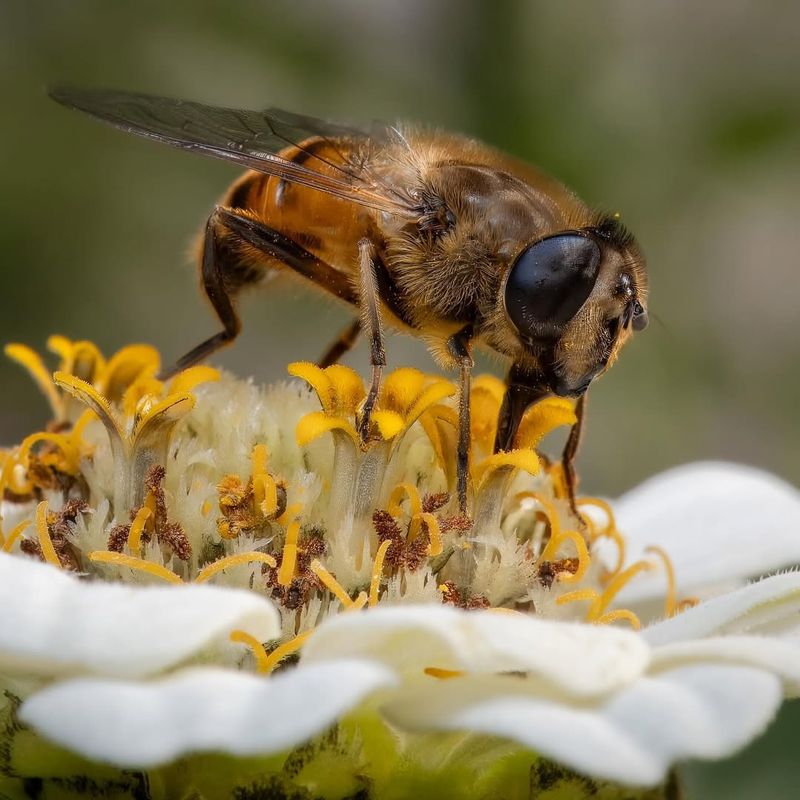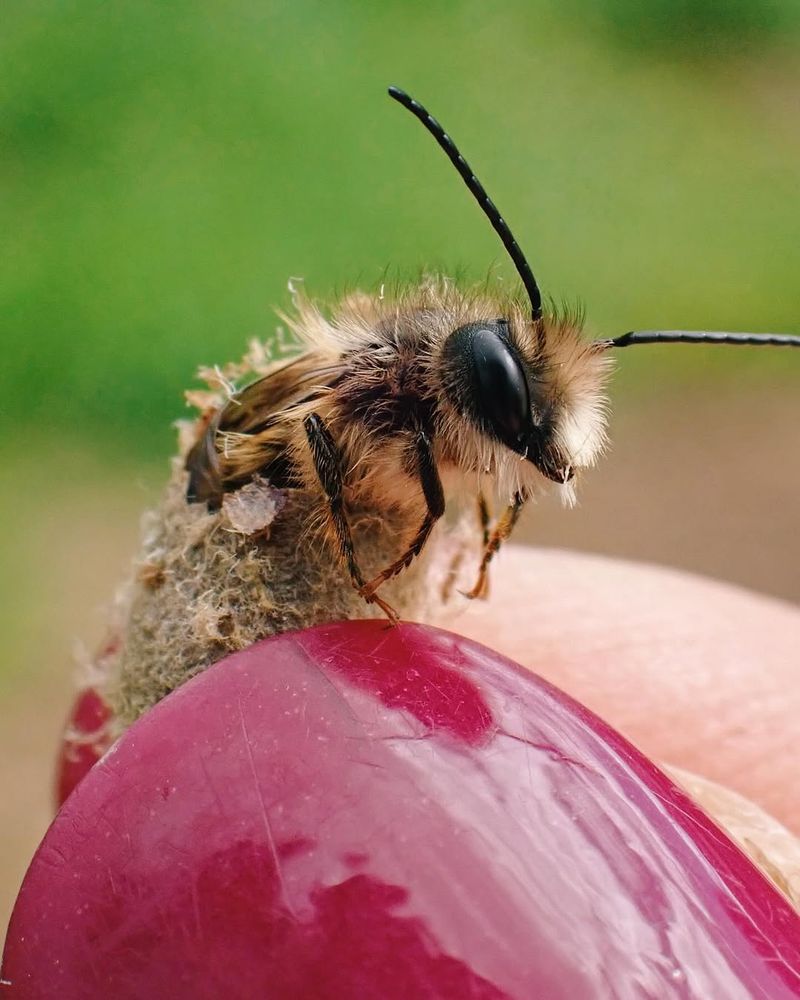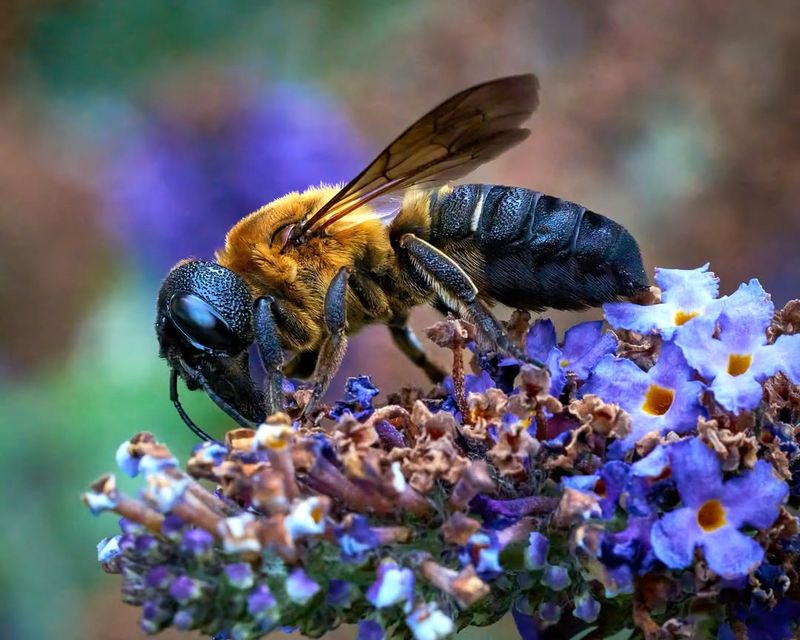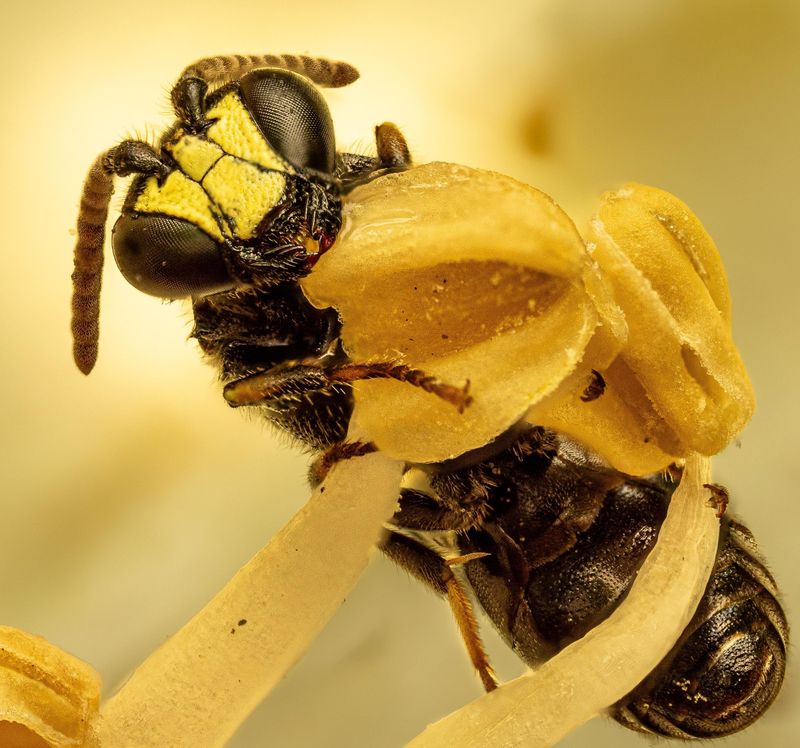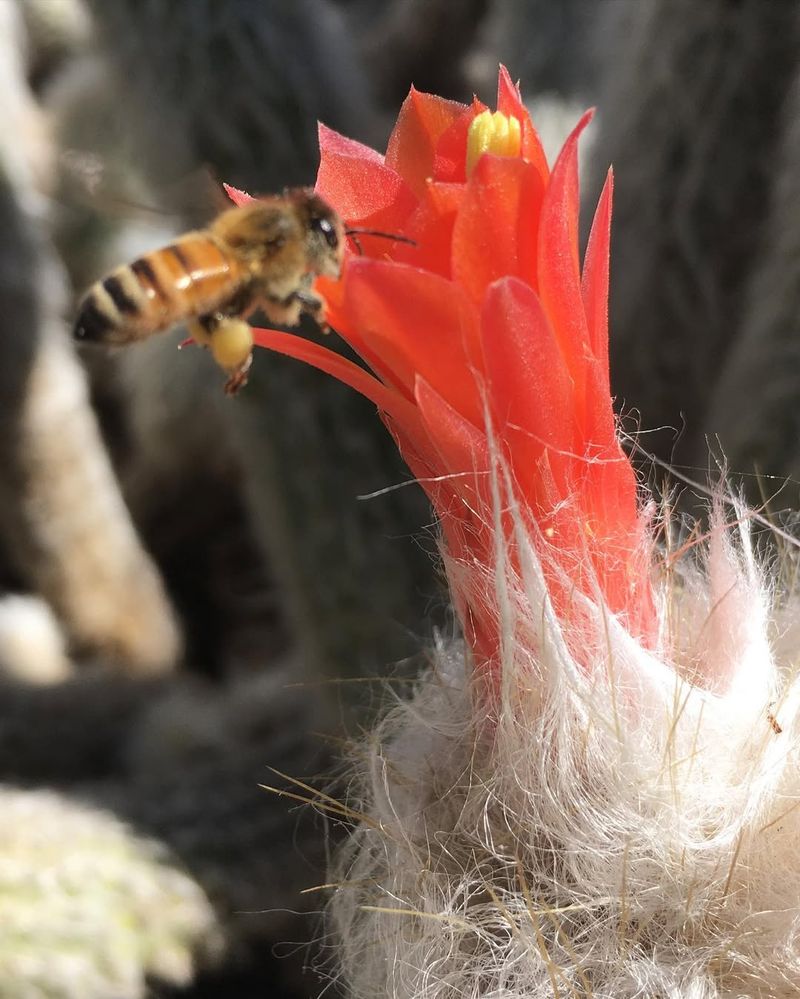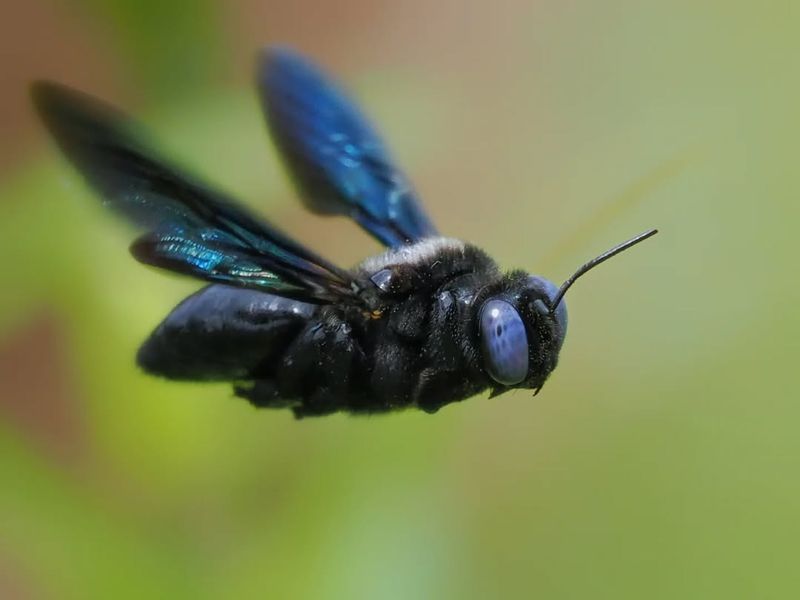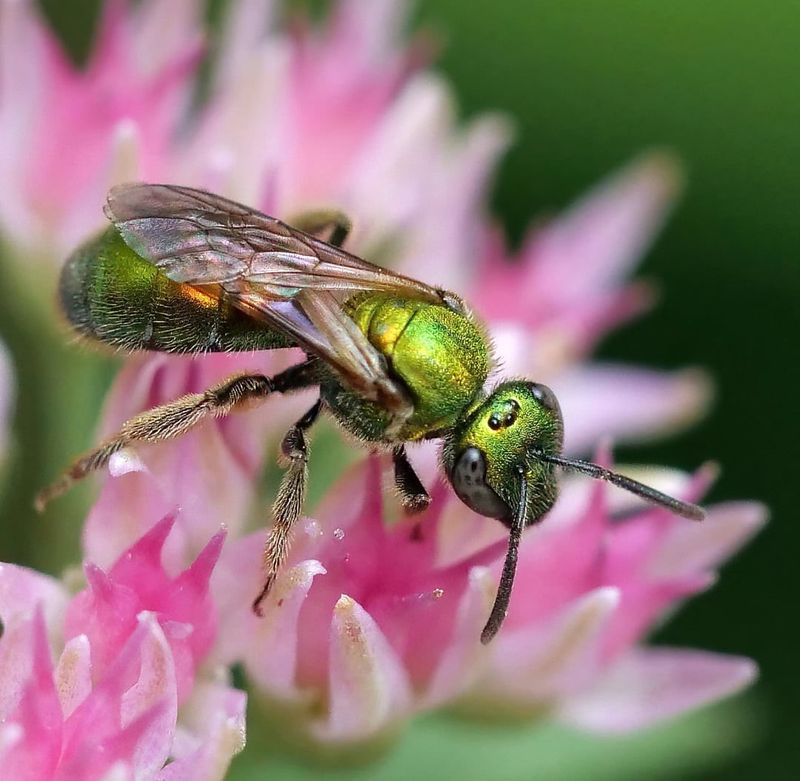Have you ever wandered through a lush, blooming garden and felt that palpable buzz of life all around? That’s the magic of pollinators at work, ensuring not just the beauty but the very survival of our gardens. Without these tireless workers, many of the plants we cherish would struggle to thrive.
Let me take you on a journey through 31 fascinating facts about these essential creatures and explore why your garden desperately needs their presence. Get ready to see your green space in a whole new light!
1. Honey Bees
It’s incredible how tirelessly these small creatures work. Honey bees, known for their organized colonies, are vital pollinators in agriculture and wild ecosystems. They collect nectar and pollen, facilitating the reproduction of flowering plants.
Their role extends beyond just pollination. Honey bees also produce honey and beeswax, which have numerous human uses. Their complex social structures and communication methods make them fascinating subjects for scientific study.
Planting bee-friendly flowers like lavender or sunflowers in your garden can support honey bee populations, creating a thriving habitat for these essential insects.
2. Bumble Bees
These fuzzy buzzers are more than just charming garden visitors. Bumble bees play a crucial role in pollinating many crops and wild plants. Unlike honey bees, they can perform ‘buzz pollination,’ vibrating flowers to release trapped pollen.
Their adaptability to cooler temperatures allows them to work in conditions where other bees might not. This makes them particularly important in colder climates.
Creating a garden with a variety of flowers blooming throughout the season can support bumble bee health, ensuring they have access to food whenever needed. Your garden will thank you with abundant blooms.
3. Butterflies
With their vibrant wings, butterflies are not just a delight to watch, but essential pollinators too. They favor brightly colored flowers and have a unique way of sipping nectar with their proboscis.
Butterflies are indicators of a healthy environment and ecosystem. Their presence in your garden can signify a balanced habitat.
To attract butterflies, consider planting a butterfly bush or milkweed. These plants not only provide nectar but are also crucial for the lifecycle of many butterfly species. Witnessing the transformation from caterpillar to butterfly is a garden experience like no other.
4. Hummingbirds
These tiny avian wonders bring excitement to any garden. Hummingbirds are expert pollinators, drawn to tubular flowers rich in nectar. Their rapid wing beats and iridescent feathers make them a joy to observe.
By transferring pollen from bloom to bloom, they ensure plants’ reproductive success. Hummingbirds have incredible energy needs, consuming half their body weight in sugar daily.
To invite hummingbirds into your garden, plant red or orange tubular flowers like trumpet vine or honeysuckle. Providing a sugar water feeder can also help sustain them during migration. Their presence will add vibrant life to your garden.
5. Solitary Bees
Often overlooked, these bees are efficient pollinators. Solitary bees, which include mason and leafcutter bees, do not form traditional hives but rather nest individually.
They are crucial to pollinating a variety of plants and are known for their gentle nature. Solitary bees are non-aggressive, making them safe garden companions.
Encouraging solitary bee populations can be as simple as providing nesting habitats. A bee house or a simple bundle of hollow reeds can attract these beneficial insects. Your garden will benefit from their diligent pollination efforts, resulting in more fruitful plants.
6. Moths
While often associated with night, moths are unsung heroes of pollination. Many flowers rely on these nocturnal visitors for reproduction.
Some moths have evolved alongside specific plant species, forming unique relationships. Moths use their keen sense of smell to locate flowers that bloom at night.
To attract moths, consider planting evening primrose or jasmine, which release scents at dusk. Observing moths can be a peaceful nighttime activity, offering a different perspective on garden life. These creatures remind us that pollination doesn’t rest with the sun.
7. Flies
It’s surprising how these often-unwelcome guests can be beneficial. Certain fly species, like hoverflies, are effective pollinators.
They visit flowers for nectar and pollen and can be especially important in cooler, early-season pollination. Hoverflies are also natural pest controllers, as their larvae consume aphids.
Encouraging flies might seem counterintuitive, but planting a diverse range of flowers can attract these helpful insects. Your garden’s health and productivity can improve with their presence, proving that flies are more than just pesky visitors.
8. Bats
When the sun sets, these winged mammals take over the pollination duties. Bats play a pivotal role in tropical and desert ecosystems.
They feed on nectar and fruit, aiding in the pollination of night-blooming plants. Bats are vital for the reproduction of many fruits, such as bananas and mangoes.
To attract bats, consider setting up a bat house or planting night-blooming flowers. Bats’ contribution to pollination demonstrates the crucial interplay between nighttime creatures and plant life, enriching biodiversity in ways we might overlook.
9. Wasps
Fear not their sting when considering their ecological importance. Certain wasp species contribute to pollination as they visit flowers for nectar.
Wasps are particularly important in ecosystems where other pollinators might be absent or scarce. They also help control pest populations by preying on insects.
Creating a garden that offers nectar-rich flowers can support wasps’ beneficial roles. By understanding their ecological contributions, we can appreciate wasps beyond their reputation, recognizing their part in a balanced garden ecosystem.
10. Beetles
Beetles might not be the first insects you think of when it comes to pollination, but they were some of the earliest pollinators.
These insects are often called “mess and soil” pollinators because of their habit of clumsily moving between flowers. Beetles prefer large, bowl-shaped flowers like magnolias and water lilies.
Though their methods might seem haphazard, beetles contribute significantly to plant reproduction. Encouraging beetles in your garden can be as simple as including beetle-friendly plants. Their presence highlights the diverse ways nature ensures the cycle of life continues.
11. Ants
These industrious creatures are more than just picnic pests. Ants can play a subtle role in pollination, particularly for ground-level flowers.
While their contribution is minimal compared to bees or butterflies, ants still aid in the pollination process. They often visit flowers for nectar, inadvertently transferring pollen.
Creating a garden with ground-hugging plants can encourage ants’ pollinating activities. Providing a diverse habitat ensures a balanced ecosystem, where even the smallest creatures play a part. Ants remind us of the intricate web of interactions that sustain life.
12. Hawk Moths
These powerful flyers are specialists in their nighttime niche. Hawk moths, with their long proboscises, can access nectar deep within tubular flowers.
Their ability to hover like hummingbirds allows them to feed from flowers that other insects can’t reach. Hawk moths’ nocturnal nature makes them key pollinators for many night-blooming plants.
To attract hawk moths, consider planting moonflowers or other fragrant night-bloomers. Observing them in action offers a unique glimpse into the world of nocturnal pollination, showing that the night holds its own vibrant pollinator community.
13. Bees
Bees are the quintessential pollinators, each species contributing uniquely to ecosystems. From honey bees to bumblebees, these insects are masters of the pollination process.
Their ability to transfer pollen efficiently supports the growth of countless plants. The diversity in bee species means that almost every flowering plant has a compatible pollinator.
Ensuring a variety of flowering plants in your garden can support different bee species, promoting a healthy ecosystem. Bees embody the symbiotic relationships that keep our gardens blooming and productive, demonstrating nature’s intricate balance.
14. Carrion Beetles
These beetles might have a grim reputation, but they perform essential ecological functions. Carrion beetles are attracted to decaying matter, where they often inadvertently pollinate nearby plants.
Their activity helps recycle nutrients back into the soil, benefiting plant growth. By visiting flowers, they transfer pollen, contributing to plant reproduction in their unique way.
Creating habitats that support carrion beetles includes leaving decaying logs or plant matter in your garden. Their presence enriches the soil and supports biodiversity, showcasing the less glamorous, yet vital, aspects of nature’s cycles.
15. Hoverflies
They may mimic bees, but hoverflies have their own important roles. These fly species are adept pollinators, visiting a wide range of flowers for both nectar and pollen.
Their agile hovering ability allows them to access flowers with precision. Hoverflies are particularly beneficial in gardens as their larvae consume aphids, naturally controlling pests.
Planting flowers such as marigolds or alyssum can attract hoverflies. Their dual role as pollinators and pest controllers makes them invaluable allies in any garden. Embrace hoverflies and enjoy a more balanced, thriving garden ecosystem.
16. Sweat Bees
These small, often metallic-colored bees are more than meets the eye. Sweat bees are efficient pollinators, favoring open-faced flowers like daisies and asters.
They are named for their attraction to human sweat, but their pollination prowess is what’s truly remarkable. Sweat bees contribute to the diversity of pollinator interactions in gardens.
Encouraging a variety of flowering plants supports sweat bee populations. Their presence ensures the health and productivity of your garden, proving that even the tiniest pollinators play mighty roles in the ecosystem’s intricate dance.
17. Orchid Bees
Their metallic brilliance makes them stand out in the pollinator world. Orchid bees are vital in tropical ecosystems, pollinating an array of orchid species.
These bees have a unique relationship with orchids, collecting scents to attract mates. This specialization leads to successful pollination for both plants and bees.
To support orchid bees, consider growing a diverse range of flowering plants. Their presence adds a touch of exotic beauty to your garden. By supporting orchid bees, you contribute to the preservation of tropical biodiversity, embracing a unique aspect of pollinator-plant interactions.
18. Mason Bees
Known for their remarkable nesting habits, mason bees are solitary pollinators with a knack for efficiency. They nest in hollow stems or holes, sealing their eggs with mud.
These bees are incredibly effective at pollination, often outperforming their honey bee counterparts. Their non-aggressive nature makes them ideal garden companions.
Providing nesting sites such as bee houses can encourage mason bee populations. Their pollination efforts lead to more abundant and healthy garden plants, showcasing the impact of solitary bees on a thriving ecosystem. Welcome these gentle pollinators and watch your garden flourish.
19. Cuckoo Bees
These bees lead intriguing lives of deception. Cuckoo bees lay their eggs in the nests of other bees, relying on them to raise their young.
Despite their parasitic behavior, cuckoo bees are still important pollinators. They visit flowers for nectar, inadvertently transferring pollen as they go.
Encouraging cuckoo bees involves maintaining a variety of native flowering plants. Their presence highlights the complex relationships within ecosystems. By understanding and supporting diverse bee species, we embrace the full spectrum of nature’s diversity, recognizing even the more unusual aspects of pollination.
20. Leafcutter Bees
Their unique nesting habits set them apart. Leafcutter bees create nests using cut leaves, forming protective cells for their offspring.
These bees are highly efficient pollinators, often visiting more flowers per minute than other bees. Their gentle nature makes them excellent garden inhabitants.
To attract leafcutter bees, provide nesting materials and plant a range of blooming flowers. Their presence ensures robust pollination, resulting in a more vibrant garden. Leafcutter bees demonstrate the ingenious ways nature supports plant life, adding another layer of fascination to your garden experience.
21. Tachinid Flies
Often overlooked, these flies are unsung heroes in the pollination game. Tachinid flies visit flowers for nectar and pollen, supporting the pollination process.
Their larvae are parasitic, helping control pest populations by targeting caterpillars and beetles. This dual role makes them beneficial allies in maintaining garden health.
Encouraging tachinid flies can be as simple as planting a variety of flowering plants. Their presence supports pollination and natural pest control, highlighting the interconnectedness of garden ecosystems. Embrace these flies and witness a more balanced and productive garden.
22. Carder Bees
Named for their habit of collecting plant fibers, carder bees are fascinating pollinators. They use these fibers to line their nests, creating a cozy environment for their young.
Carder bees are solitary and gentle, making them ideal garden guests. Their pollination activities contribute significantly to plant reproduction.
To attract carder bees, plant fiber-rich plants like lamb’s ear. These bees demonstrate the resourcefulness of nature, using available materials to thrive. By supporting carder bees, you enhance your garden’s biodiversity, enjoying the rewards of a flourishing ecosystem.
23. Mining Bees
These ground-nesting bees are masters of their subterranean domain. Mining bees dig tunnels in the soil to create nests, where they raise their young.
They are efficient pollinators, visiting a variety of flowering plants. Their gentle nature makes them welcome garden residents.
To accommodate mining bees, provide areas of undisturbed soil and diverse flowering plants. Their presence encourages healthy plant growth, demonstrating the importance of ground-nesting bees in pollination. By fostering mining bee habitats, you support a crucial component of the pollinator community, enriching your garden’s ecosystem.
24. Blue Orchard Bees
With their striking metallic blue appearance, these bees are not only beautiful but also highly effective pollinators. Blue orchard bees are solitary, favoring fruit trees for their pollination activities.
They are particularly beneficial for orchards, increasing fruit set and quality. Their gentle behavior makes them ideal for home gardens.
Providing nesting sites and planting fruit trees can support blue orchard bee populations. Their contribution to pollination ensures bountiful harvests, highlighting the value of solitary bees in agriculture. Welcome these sparkling pollinators and enjoy the fruits of their labor.
25. Wool Carder Bees
These industrious bees are named for their habit of collecting plant fibers to build nests. Wool carder bees are solitary and territorial, often seen defending their patch of flowers.
They play an important role in pollinating a variety of plants, contributing to the garden’s diversity. Their presence adds a dynamic aspect to garden life.
To encourage wool carder bees, plant fiber-rich plants and provide a range of flowering options. Their unique behaviors offer insight into the diverse strategies pollinators use to thrive. Supporting wool carder bees enhances your garden’s ecosystem, fostering a healthy, vibrant environment.
26. Red Mason Bees
These solitary bees are renowned for their efficiency in pollination. Red mason bees use mud to build and seal their nests, creating secure environments for their offspring.
They are highly effective pollinators, especially for fruit trees and early spring flowers. Their gentle nature makes them welcome additions to any garden.
To attract red mason bees, provide nesting sites and plant a variety of blooms. Their presence ensures abundant fruit and flower production, emphasizing the importance of solitary bees in garden ecosystems. By embracing red mason bees, you contribute to a thriving and productive garden.
27. Resin Bees
Known for their unique nesting habits, resin bees use plant resins to construct their brood cells. These solitary bees are effective pollinators, visiting a range of flowering plants.
Resin bees are gentle and non-aggressive, making them ideal for gardens. Their work ensures diverse and healthy plant growth.
To support resin bees, provide access to resin-producing plants and a variety of flowers. Their presence enhances your garden’s biodiversity, showcasing the versatility of solitary bees. By welcoming resin bees, you foster a dynamic and resilient garden ecosystem.
28. Yellow-Faced Bees
These small, often overlooked bees have a subtle yet important role in pollination. Yellow-faced bees are solitary, preferring open-faced flowers.
Their gentle nature makes them suitable for home gardens, where they contribute to plant diversity and health. Yellow-faced bees are efficient pollinators, supporting the growth of various plants.
To attract yellow-faced bees, plant a range of flowering species and provide nesting habitats. Their presence ensures a balanced ecosystem, highlighting the importance of even the smallest pollinators in sustaining garden life. Embrace yellow-faced bees and enjoy the benefits of a thriving garden.
29. Cactus Bees
These desert specialists have adapted to thrive in arid environments. Cactus bees are solitary, often found in areas where cacti bloom.
They are crucial for the pollination of cactus flowers, ensuring the survival and reproduction of these unique plants. Cactus bees’ activities support desert biodiversity.
To support cactus bees, consider incorporating cacti and native desert plants in your garden. Their presence underscores the adaptability of pollinators to extreme environments, highlighting the vital role they play in maintaining ecological balance. Welcome cactus bees and witness the resilience of desert ecosystems.
30. Violet Carpenter Bees
These striking bees are hard to miss. Violet carpenter bees are solitary and known for their ability to nest in wood.
They are effective pollinators, visiting a wide range of flowers. Their unique nesting habits add an interesting dynamic to garden life.
To support violet carpenter bees, provide wood nesting sites and a variety of blooms. Their presence enriches your garden’s biodiversity, showcasing the resilience and adaptability of solitary bees. By welcoming violet carpenter bees, you contribute to a diverse and vibrant garden ecosystem.
31. Green Sweat Bees
These dazzling bees are a sight to behold. Green sweat bees, with their metallic sheen, are efficient pollinators of open-faced flowers.
They are gentle and unobtrusive, making them perfect for home gardens. Their pollination activities support a wide range of plant species.
To attract green sweat bees, plant a variety of blooms and provide nesting sites. Their presence enhances your garden’s beauty and productivity, highlighting the diversity of pollinator species. Embrace the vibrant allure of green sweat bees and enjoy a flourishing garden.

